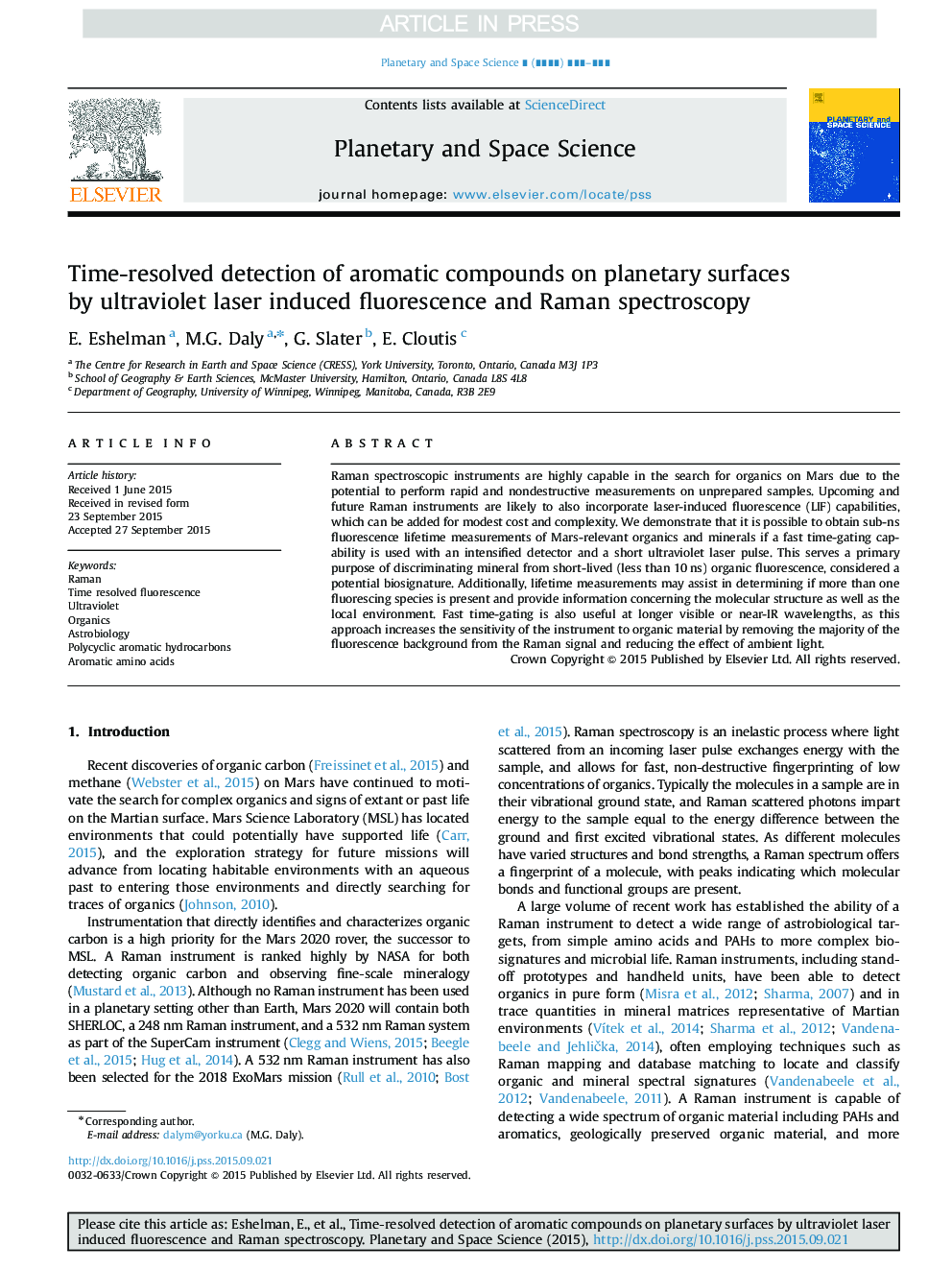| Article ID | Journal | Published Year | Pages | File Type |
|---|---|---|---|---|
| 8142970 | Planetary and Space Science | 2015 | 8 Pages |
Abstract
Raman spectroscopic instruments are highly capable in the search for organics on Mars due to the potential to perform rapid and nondestructive measurements on unprepared samples. Upcoming and future Raman instruments are likely to also incorporate laser-induced fluorescence (LIF) capabilities, which can be added for modest cost and complexity. We demonstrate that it is possible to obtain sub-ns fluorescence lifetime measurements of Mars-relevant organics and minerals if a fast time-gating capability is used with an intensified detector and a short ultraviolet laser pulse. This serves a primary purpose of discriminating mineral from short-lived (less than 10Â ns) organic fluorescence, considered a potential biosignature. Additionally, lifetime measurements may assist in determining if more than one fluorescing species is present and provide information concerning the molecular structure as well as the local environment. Fast time-gating is also useful at longer visible or near-IR wavelengths, as this approach increases the sensitivity of the instrument to organic material by removing the majority of the fluorescence background from the Raman signal and reducing the effect of ambient light.
Keywords
Related Topics
Physical Sciences and Engineering
Earth and Planetary Sciences
Geophysics
Authors
E. Eshelman, M.G. Daly, G. Slater, E. Cloutis,
